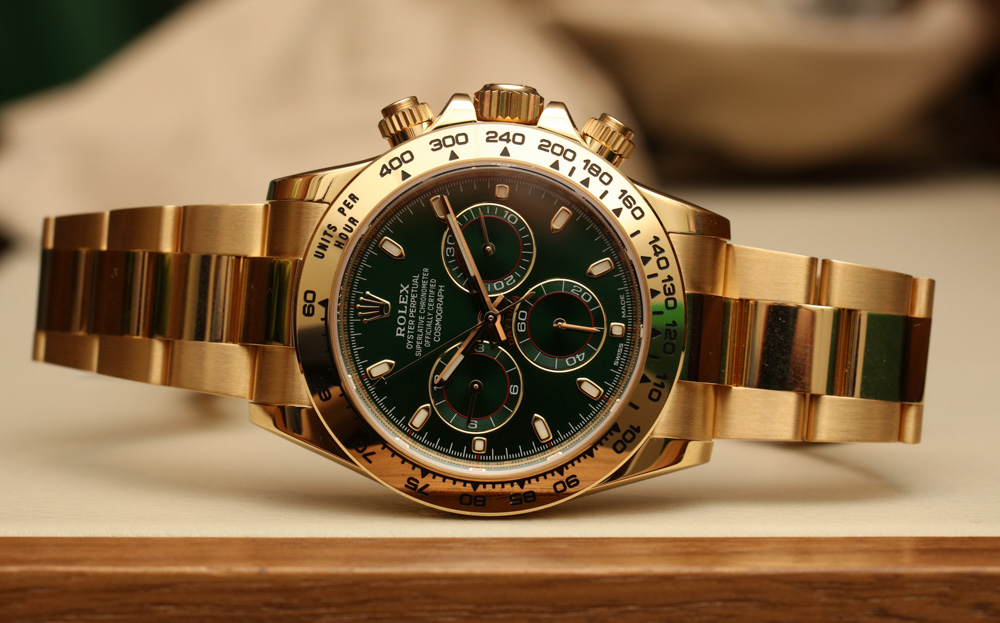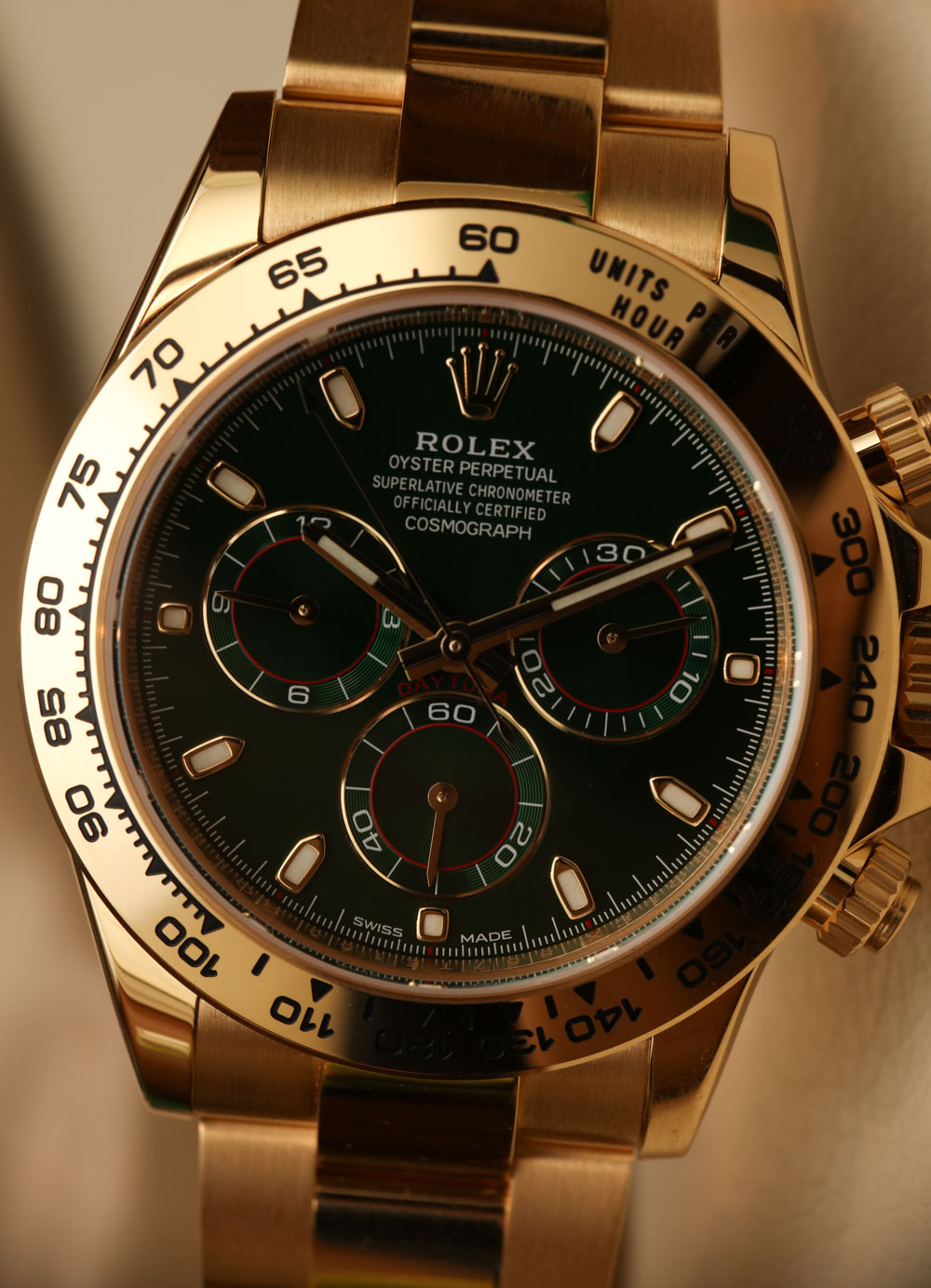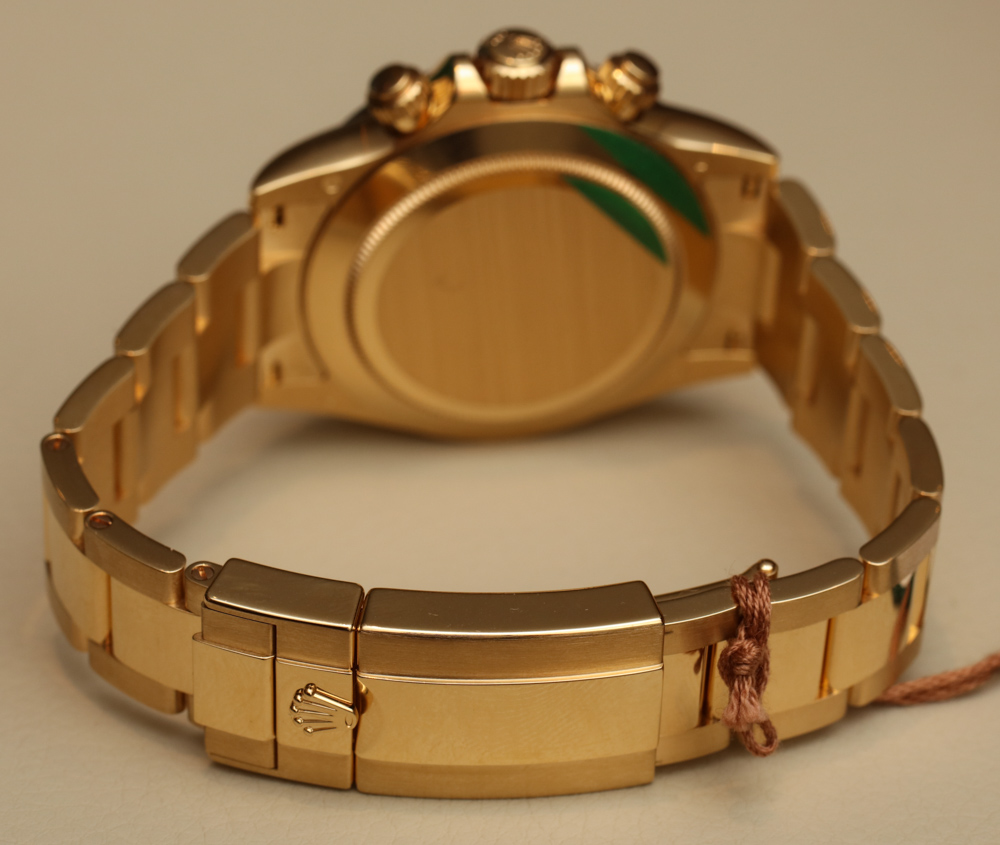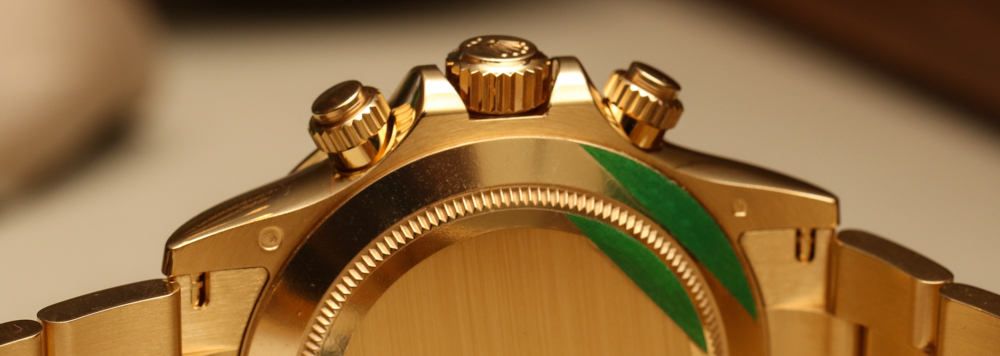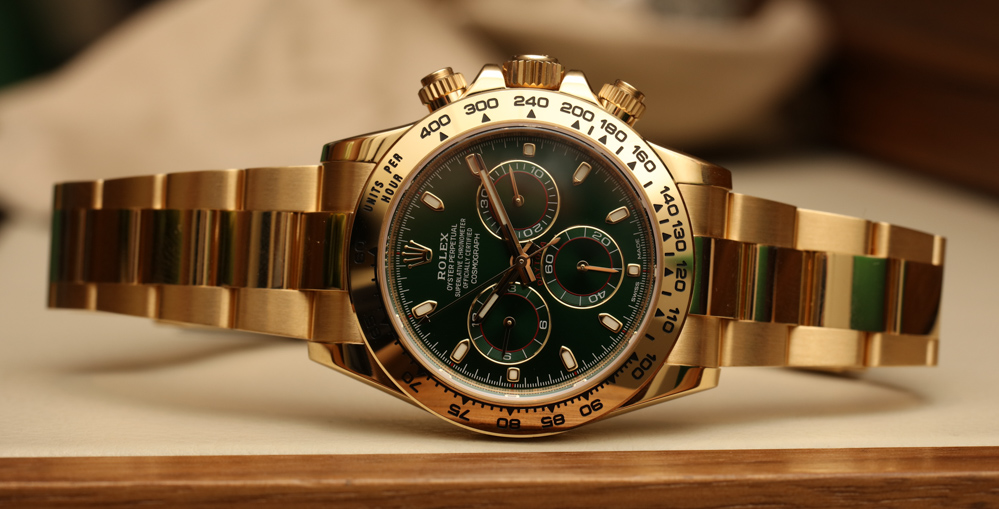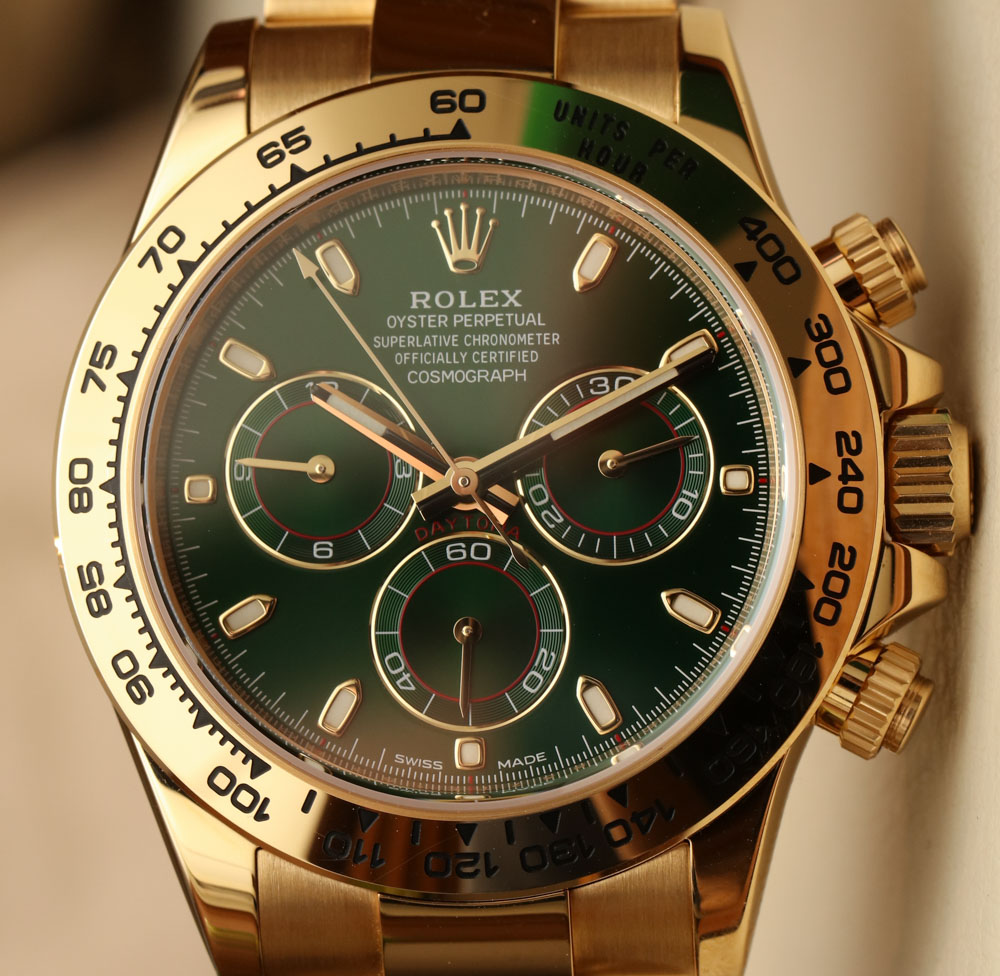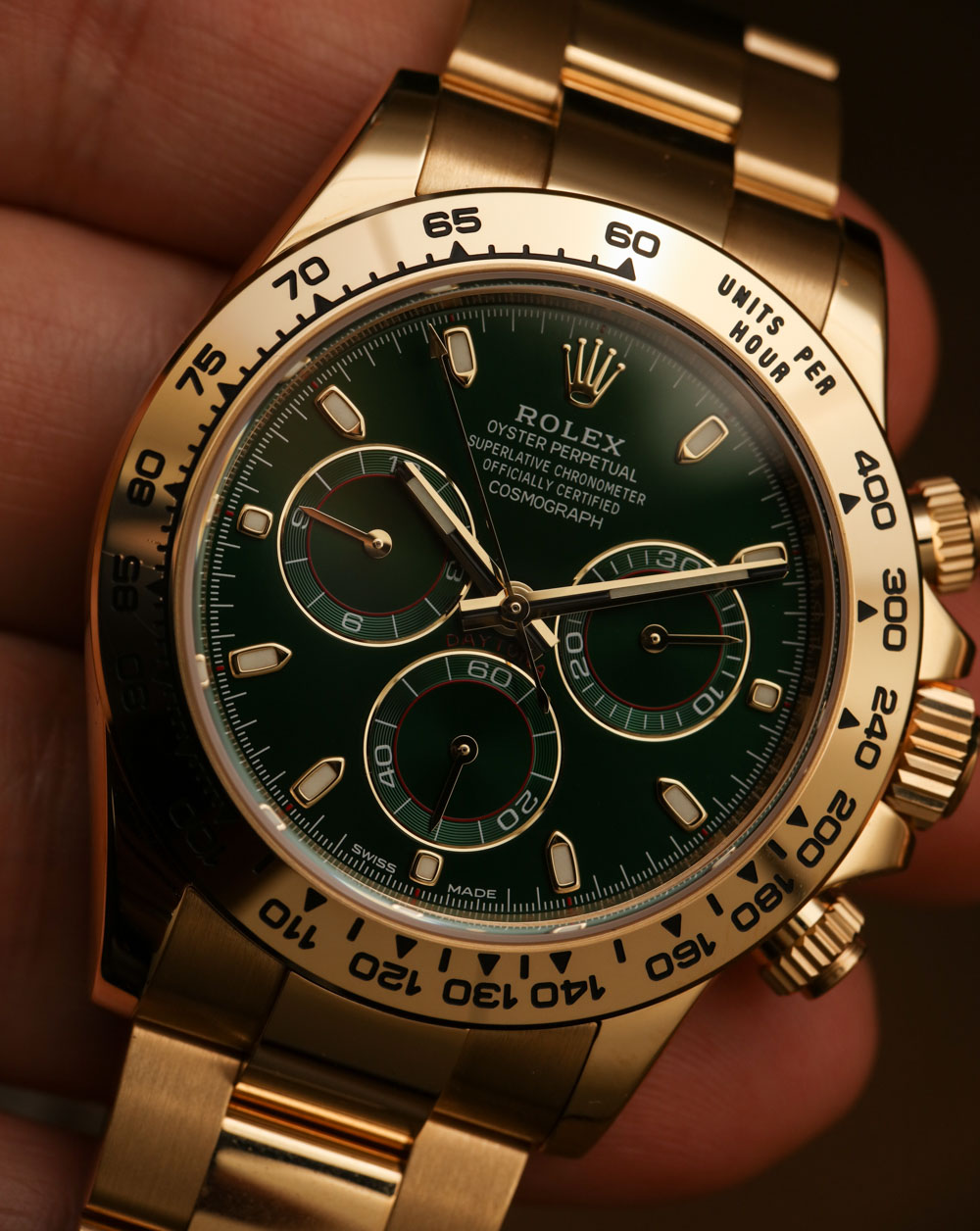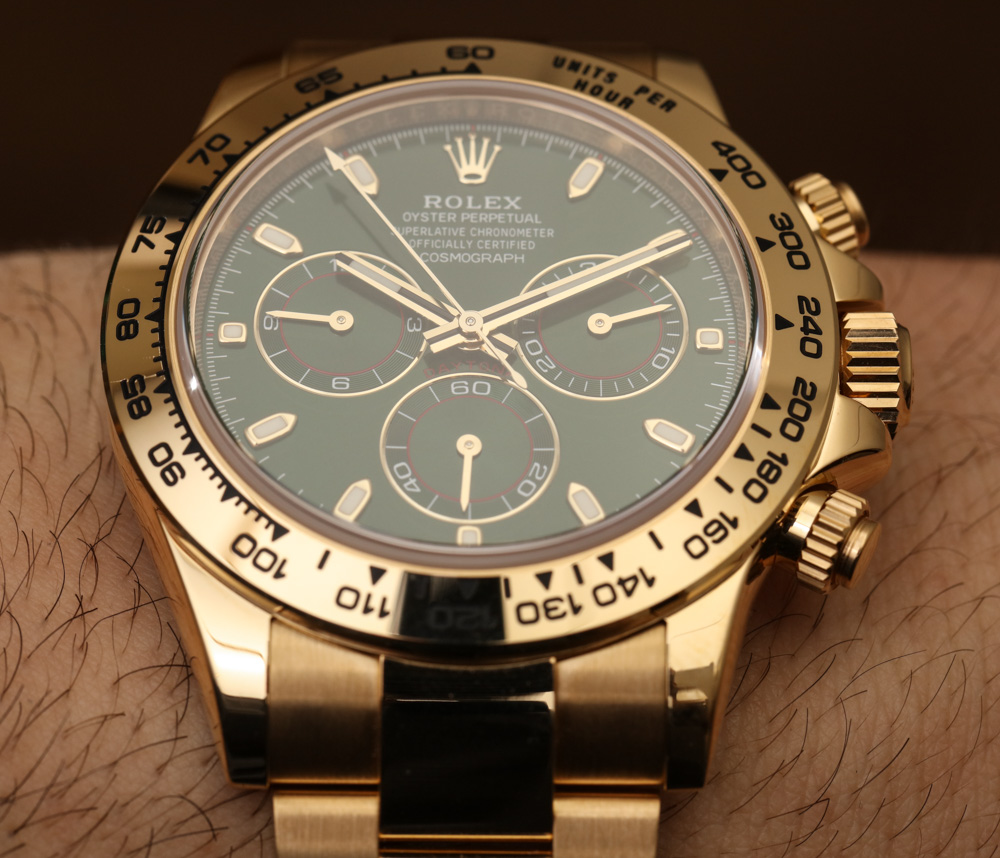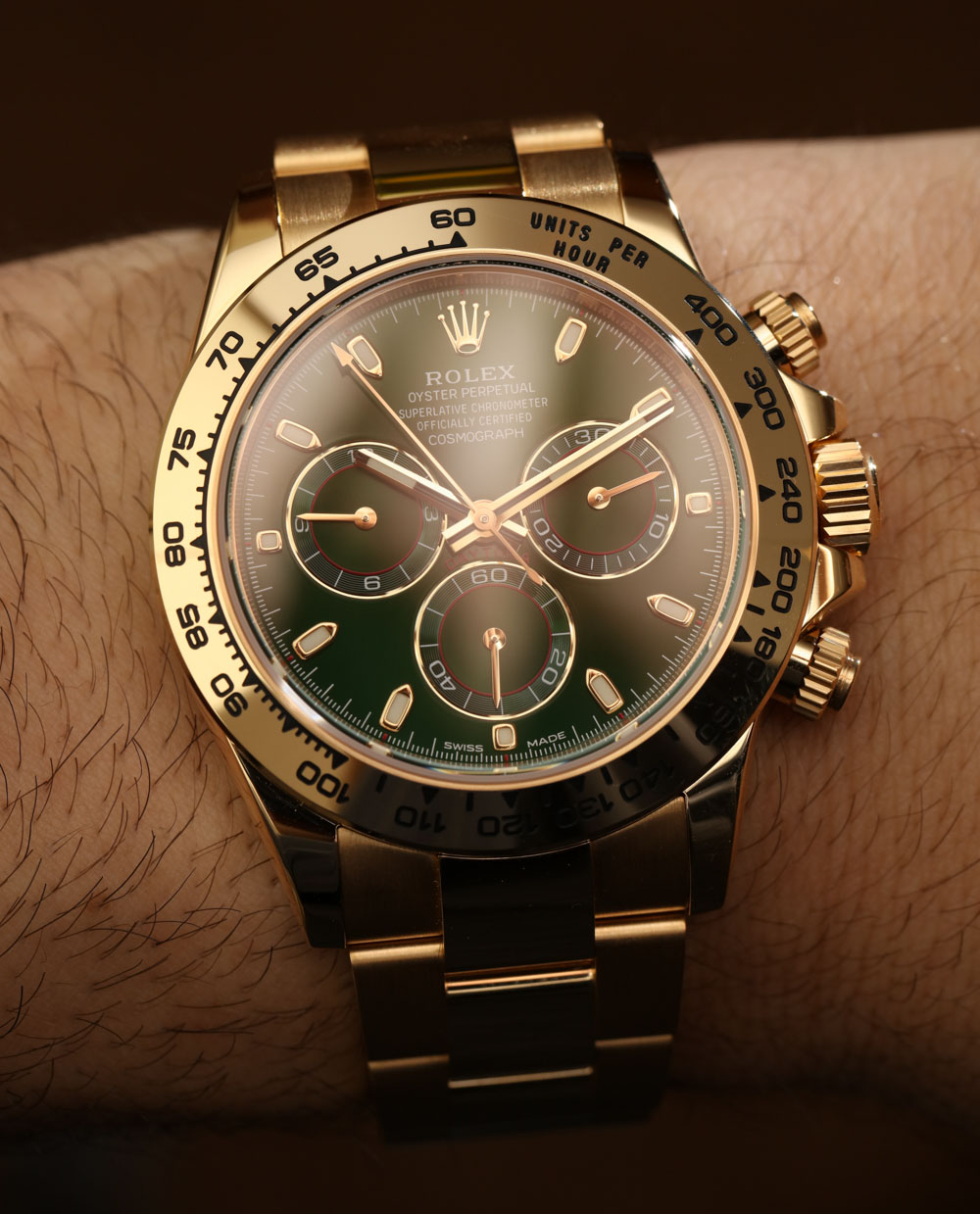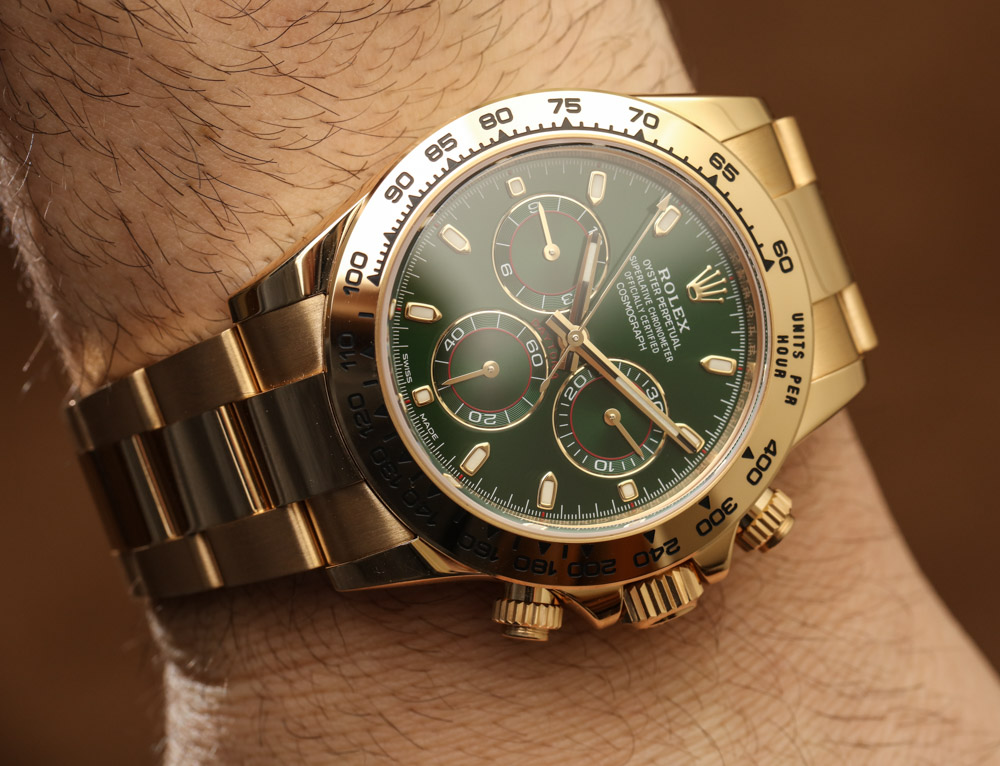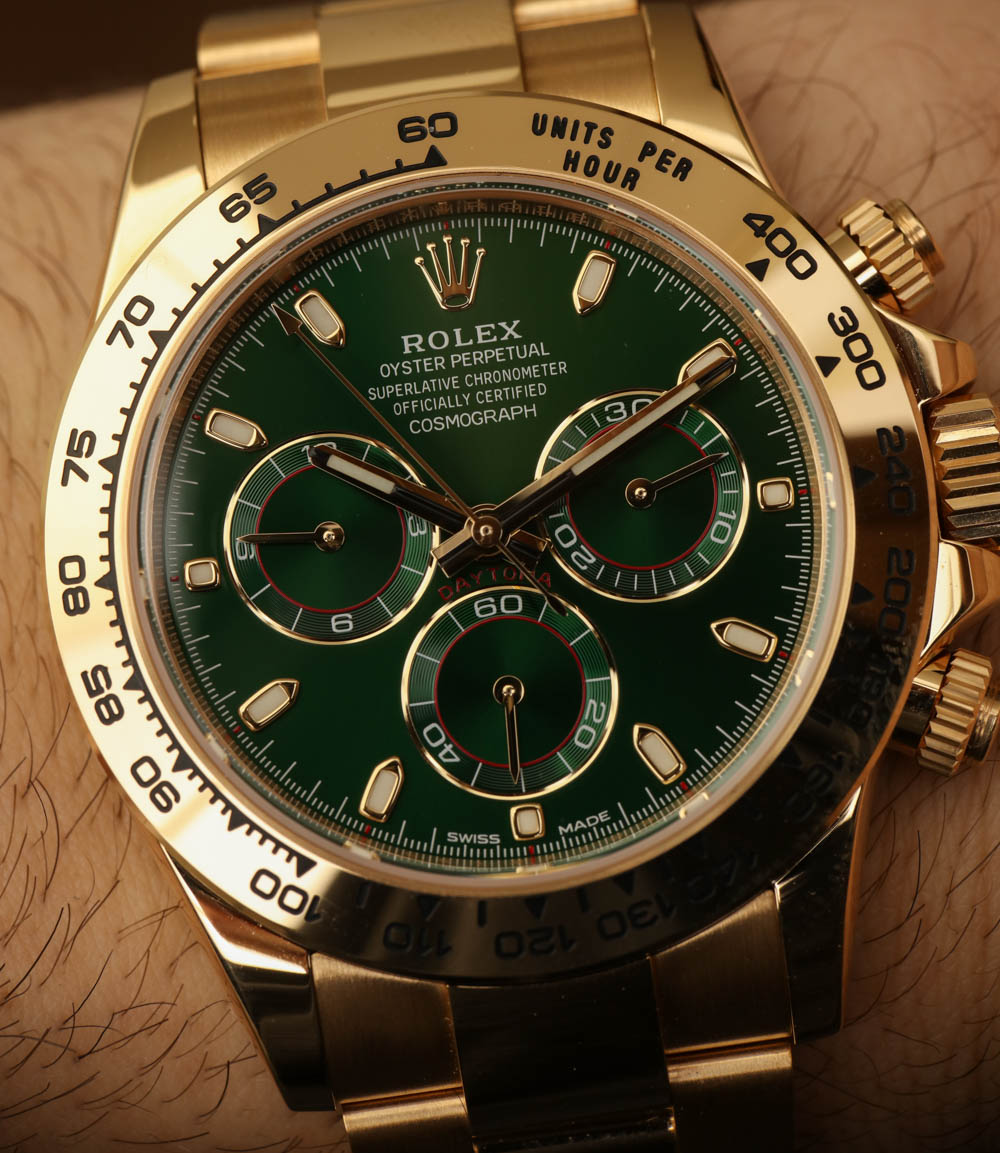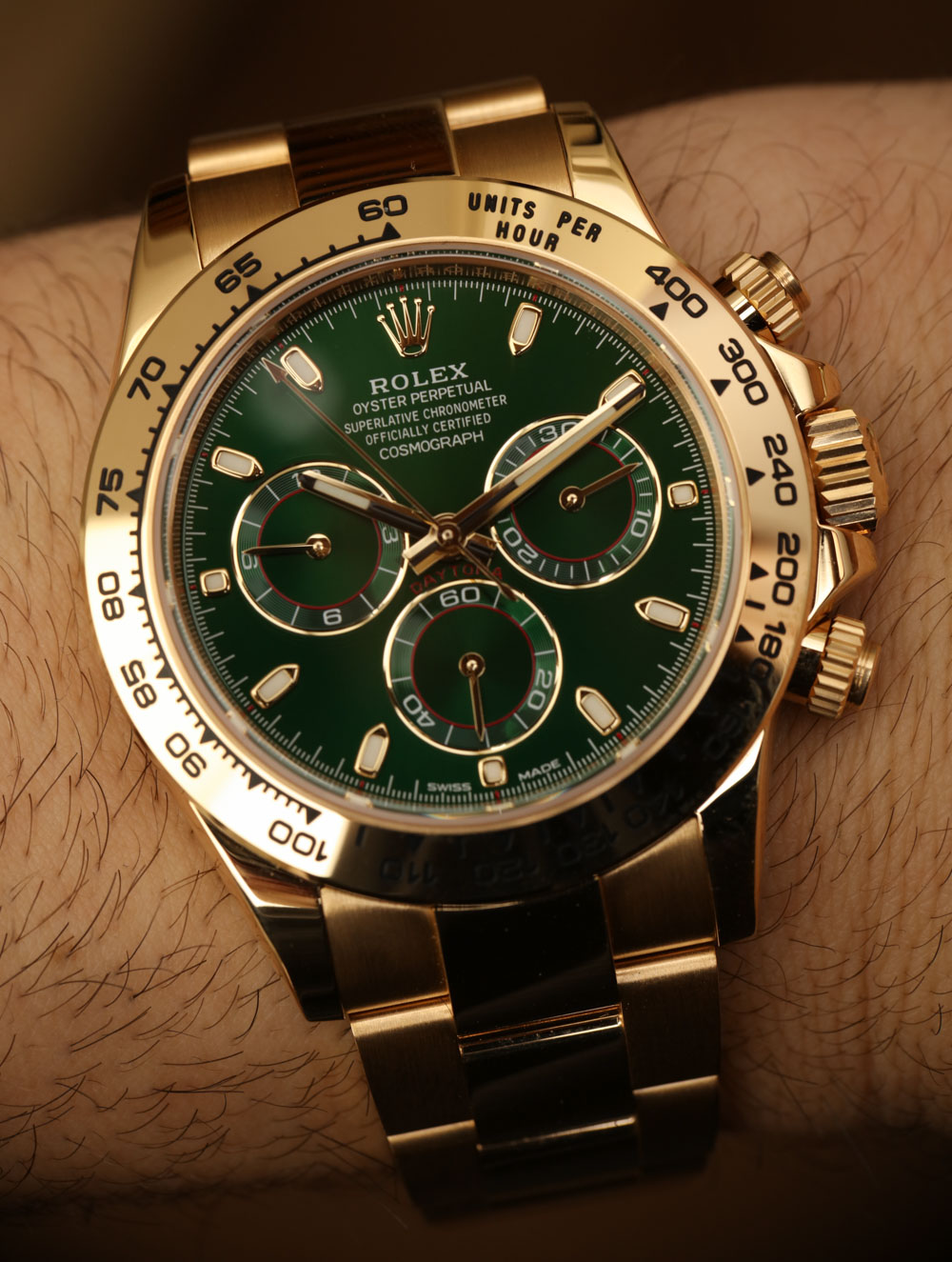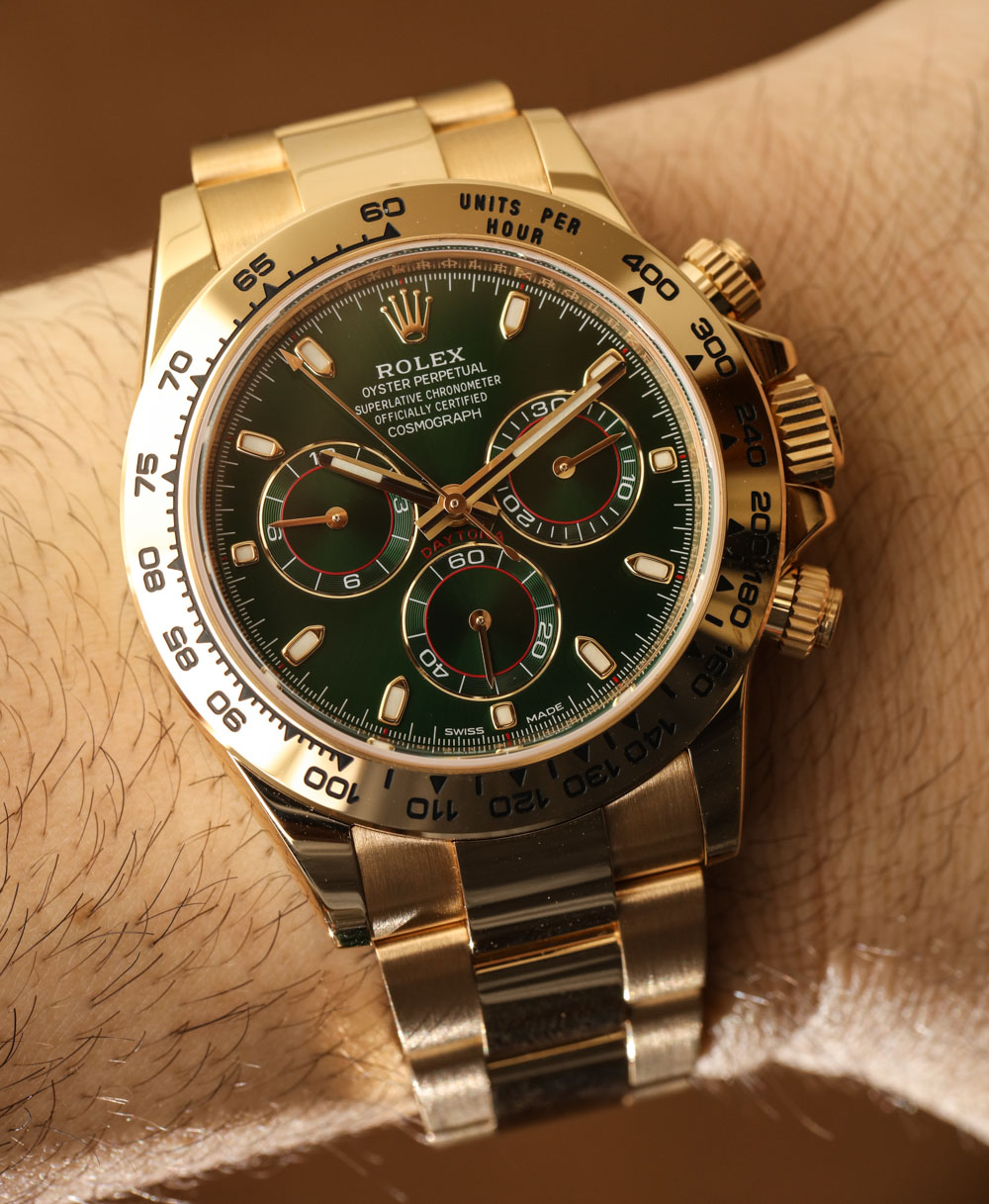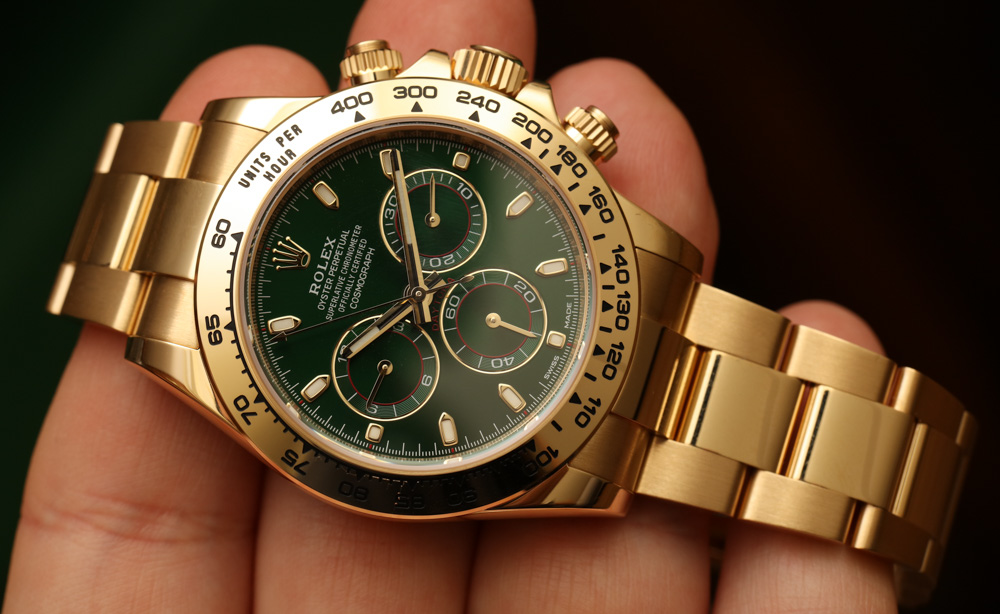
The small irony of “the green seal” is that it is on top of COSC Chronometer certification that most Rolex watches receive. Earlier in 2016, aBlogtoWatch first announced that Rolex was extending its very stringent +2/-2 seconds per day certification to all of its watch movements moving forward. This is roughly double the accuracy needed for COSC Chronometer certification. Finally, “Superlative Chronometer” has some tangible meaning. Moreover, I find it fitting that the year Rolex debuts the green seal, they release a version of the popular Rolex Daytona with a green dial. FYI, 2016 also saw the release of the green-dialed 18k Everose gold Rolex Day-Date “President” watch.
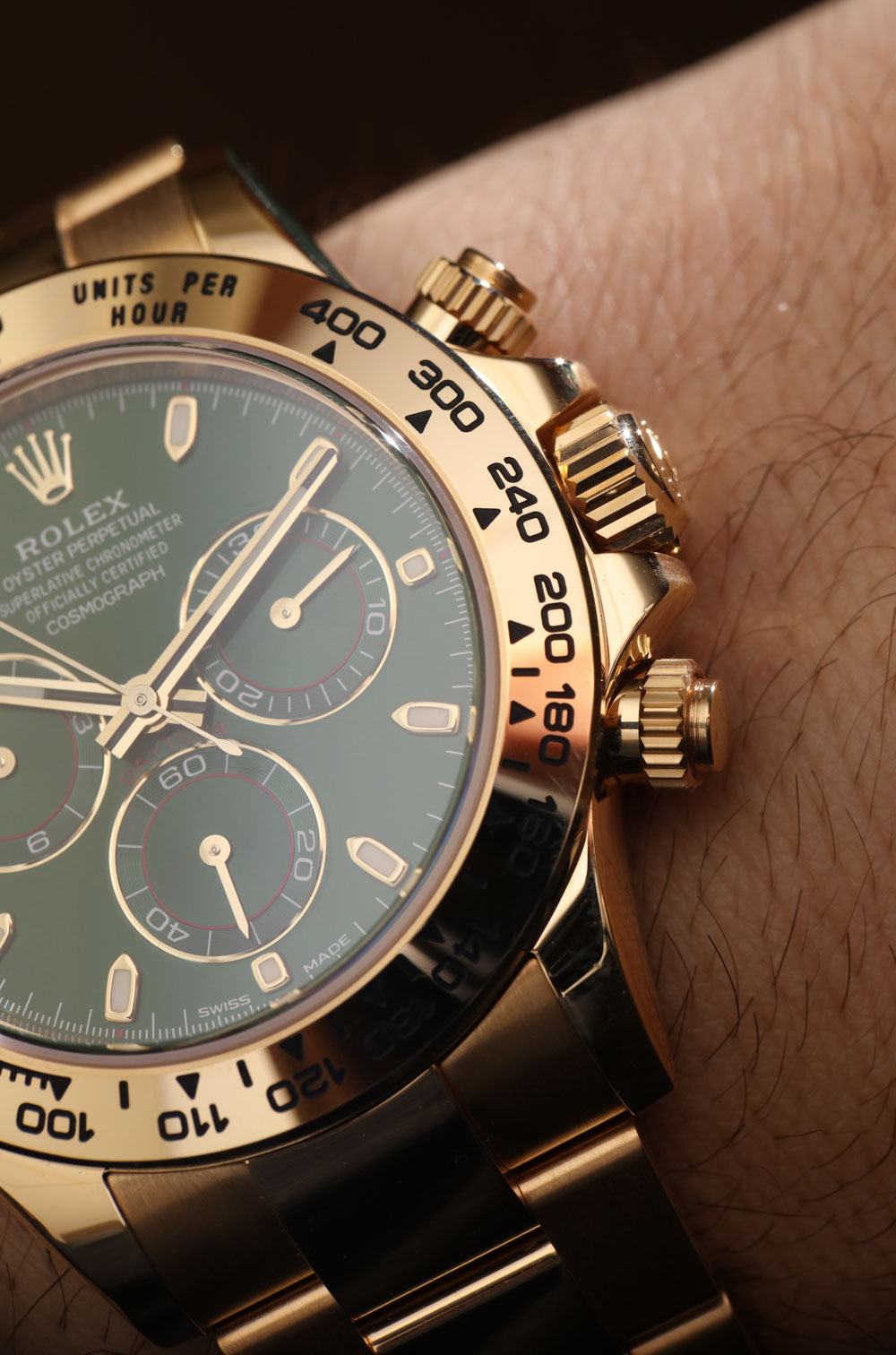
For the last decade or so, 18k rose gold has been the “it” gold of choice for timepieces. Rolex even has its own special formulation of rose gold they call “Everose” (because the color doesn’t fade). With that said, 18k yellow gold is making a bit of a comeback, which is a good thing, in my opinion. Apparently, consumers seemed to strongly prefer rose gold for whatever reason, which is why yellow gold fell by the wayside. Neither form of gold is better, it just depends on your tastes and skin tone. I personally prefer yellow gold, which is the metal this Rolex Daytona 116508 YG is produced from.
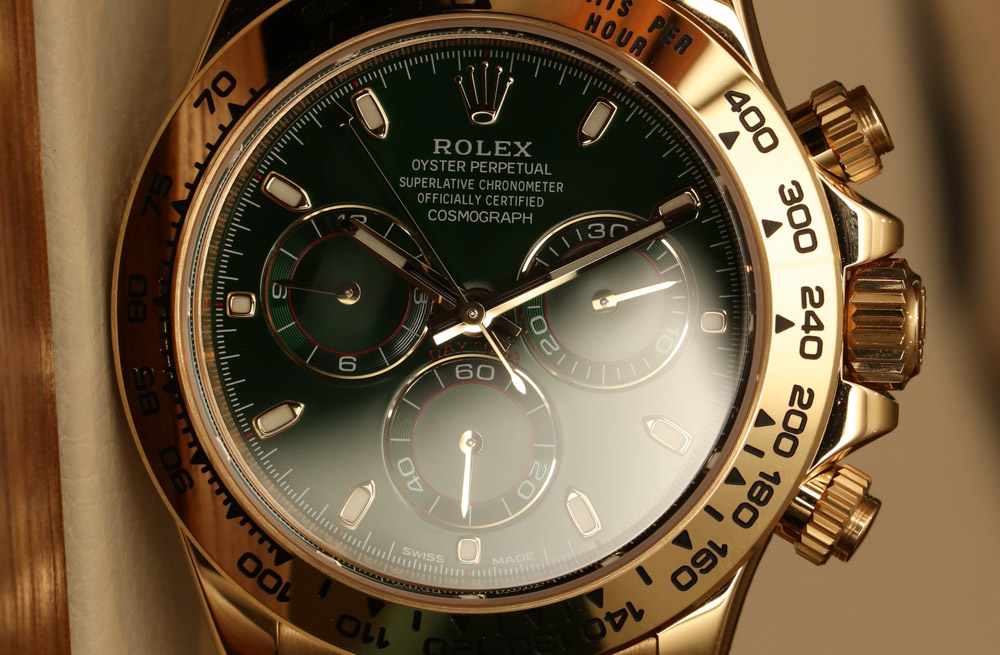
At 40mm wide with relatively narrow lugs and a thick bezel, I still feel that the Rolex Daytona could grow a few millimeters in size. Nevertheless, the shape is beautiful, and the wearing comfort is legendary. There are few more comfortable chronograph watches on the market, and compared to most of the very thick chronograph watches around, the Rolex Daytona is practically “ultra slim” in its wearing proportions. No ceramic bezel here, but rather a full 18k yellow gold bezel with the Rolex Daytona’s signature (and arguably vestigial) tachymeter scale. Note that the Rolex Cosmograph Daytona 116500LN in steel with the black ceramic Cerachrom bezel has a slightly updated tachymeter scale design – whereas this 18k yellow gold model continues with the outgoing bezel design. Most people will simply not notice the difference between the two.
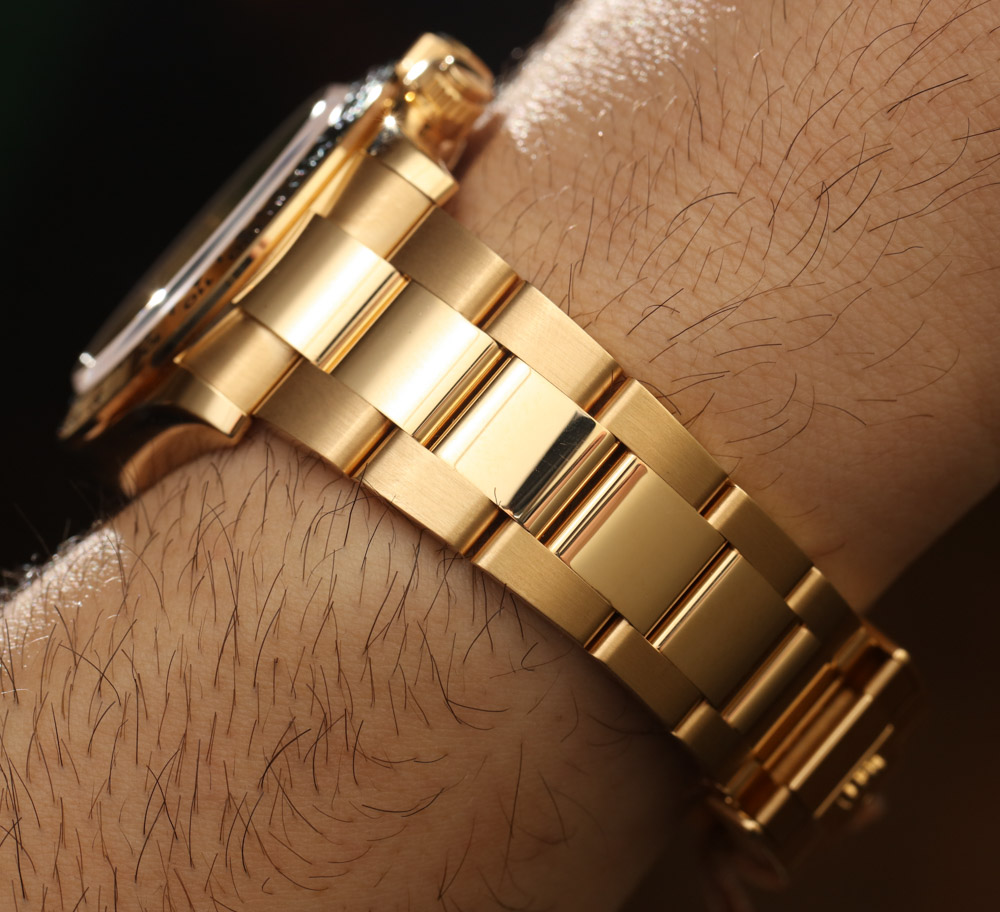
The deep Rolex green dial (let’s call it “Rolex racing green”) is accented with 18k yellow gold hands and hour markers, as well as a hint of red color in the “Daytona” name as well as inner rings in the chronograph subdials, and at the hour markers. Its a devilishly handsome look, and in the yellow gold case this is the epitome of handsome, albeit high-status-Rolex-Daytona-wearing handsome.
The 40mm-wide Oyster case is water resistant to 100 meters and both the crown as well as chronograph pushers are screwed down. Rolex uses a very comfortable, tapering three-link gold bracelet with a polished center link and brushed outer links. It looks like a million bucks… and yet costs only a faction of that!
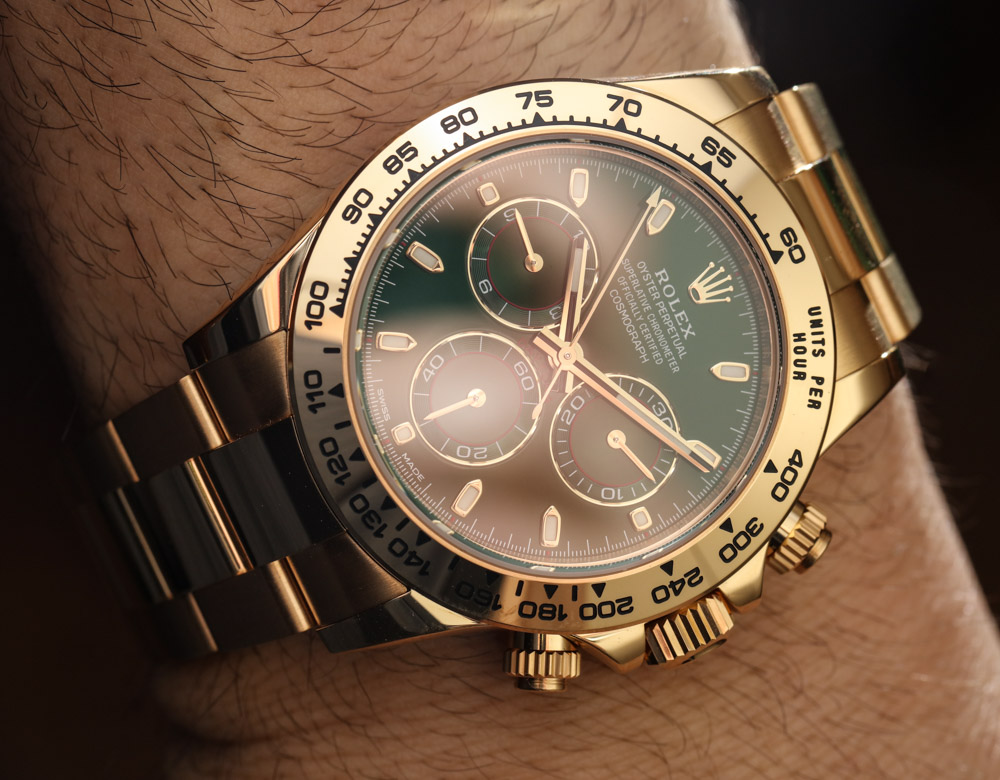
Inside this and other modern Rolex Cosmograph Daytona watches is the in-house Rolex-made caliber 4130 automatic chronograph movement. Operating at 4Hz with about two days of power reserve, the 4130 is reportedly unchanged for 2016, despite the new more stringent accuracy and warranty standards being applied to it. It is a lovely movement to use, and as aficionados prefer, it has the time and 12-hour chronograph complication… with no date.
Rolex 116508 yellow gold Daytona models are on the rarer side, even though Rolex makes 13 versions of them (according to their website). The new green-dial 116508 is sure to be a hit among those who have the place (and budget) for a gold Rolex Daytona in their life. Price for this Rolex Cosmograph Daytona 116508 green dial watch is $34,650 USD or 33,100 Swiss francs. rolex.com

